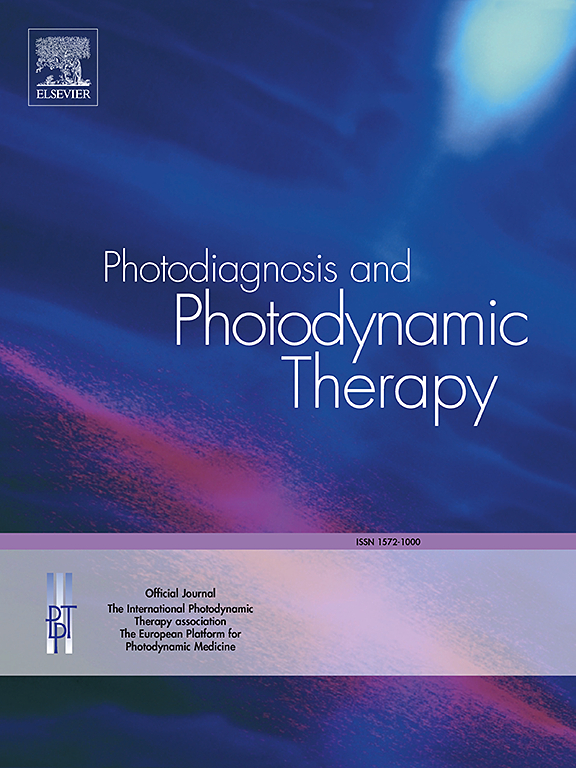电离辐射和光动力治疗导致人膀胱癌类器官肿瘤细胞多模式死亡、协同细胞毒性和免疫细胞侵袭。
IF 3.1
3区 医学
Q2 ONCOLOGY
引用次数: 0
摘要
背景:光动力治疗(PDT)和使用电离辐射(IR)的放射治疗是膀胱癌(BCa)器官保留治疗的有希望的选择。联合治疗(IR+PDT)可能有利于BCa的治疗。目的:采用近红外光敏剂四氢卟啉四烯酸酯(THPTS)治疗PDT,具有较高的治疗效果。分析BCa类器官的治疗反应。方法:对BCa细胞系、膀胱成纤维细胞和肌肉细胞进行IR (9 Gy)和/或PDT(25、50 μM;20 J / cm2)。细胞毒性通过显微镜、细胞基础实验和组织学检测。应用特异性抑制剂分析细胞死亡模式,然后对细胞死亡标志物进行免疫荧光或qPCR分析。采用基于基质的共培养模型来研究T细胞在处理过的类器官环境中的迁移。结果:PDT和/或IR导致代谢活性、类器官直径和完整性的浓度依赖性降低。72小时后观察到IR+PDT比单一治疗更高的细胞毒性。非恶性类器官没有细胞毒性作用。T-24细胞的死亡明显与凋亡、坏死和铁坏死有关,而RT-112细胞的细胞毒性可能是由凋亡、铁坏死和焦亡引起的。IR+PDT导致Jurkat细胞在治疗后3天内向ecm包埋的类器官显著迁移。结论:IR+PDT治疗对BCa类器官具有肿瘤选择性细胞毒性,具有累加或协同作用。因此,IR+PDT根据细胞环境导致多模态细胞死亡。T细胞向类器官环境的迁移说明了IR+PDT的免疫原性潜力。因此,它可能是一种很有前途的器官保存BCa治疗方法。本文章由计算机程序翻译,如有差异,请以英文原文为准。
Ionizing radiation and photodynamic therapy lead to multimodal tumor cell death, synergistic cytotoxicity and immune cell invasion in human bladder cancer organoids
Background
Photodynamic therapy (PDT) and radiotherapy using ionizing radiation (IR) are promising options for organ-preserving treatment of bladder cancer (BCa). A combination therapy (IR+PDT) could be beneficial for BCa treatment.
Purpose
For PDT, we used the near-infrared photosensitizer tetrahydroporphyrin-tetratosylate (THPTS) showing high therapeutic efficacy. Treatment responses were analyzed in BCa organoids.
Methods
Organoids consisting of BCa cells lines, bladder fibroblasts and muscle cells were treated with IR (9 Gy) and/or PDT using THPTS (25, 50 μM; 20 J/cm2). Cytotoxicity was determined by microscopy, cell-based assays and histology. The cell death mode was analyzed by applying specific inhibitors followed by immunofluorescence or qPCR analyses of cell death markers. A matrix-based co-culture model was used to study T cell migration into the environment of treated organoids.
Results
PDT and/or IR resulted in concentration-dependent reduction of metabolic activity, organoid diameter and integrity. Higher cytotoxicity of IR+PDT vs. monotherapies was observed after 72 h. Non-malignant organoids showed no cytotoxic effects. While apoptosis, necroptosis and ferroptosis were clearly involved in cell death of T-24 cells, cytotoxicity in RT-112 cells was probably provoked by apoptosis, ferroptosis and pyroptosis. IR+PDT resulted in significant migration of Jurkat cells into ECM-embedded organoids within 3 days after treatment.
Conclusion
Treatment with IR+PDT showed tumor-selective cytotoxicity with additive or synergistic effects in BCa organoids. Thereby, IR+PDT led to multimodal cell death depending on the cellular context. Migration of T cells into the organoid environment illustrates the immunogenic potential of IR+PDT. Therefore, it might be a promising approach for organ-preserving BCa treatment.
求助全文
通过发布文献求助,成功后即可免费获取论文全文。
去求助
来源期刊

Photodiagnosis and Photodynamic Therapy
ONCOLOGY-
CiteScore
5.80
自引率
24.20%
发文量
509
审稿时长
50 days
期刊介绍:
Photodiagnosis and Photodynamic Therapy is an international journal for the dissemination of scientific knowledge and clinical developments of Photodiagnosis and Photodynamic Therapy in all medical specialties. The journal publishes original articles, review articles, case presentations, "how-to-do-it" articles, Letters to the Editor, short communications and relevant images with short descriptions. All submitted material is subject to a strict peer-review process.
 求助内容:
求助内容: 应助结果提醒方式:
应助结果提醒方式:


